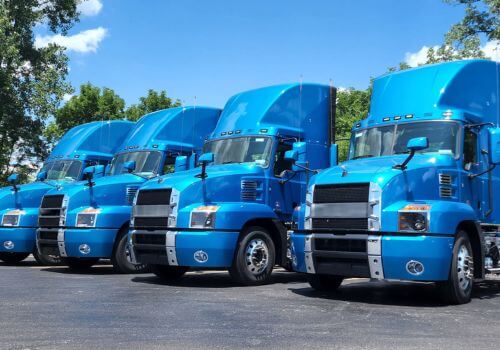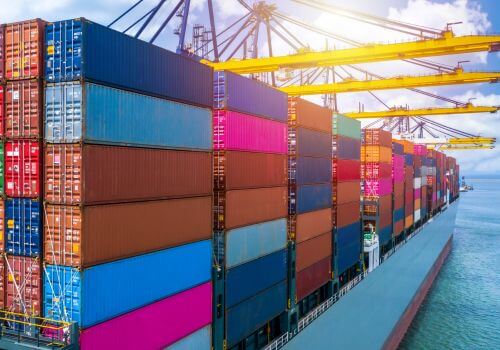In the world of logistics and e-commerce fulfillment, shipping labels might seem like a small detail, but they are one of the most critical components in the supply chain. A properly created and managed shipping label ensures that your product reaches the right person, at the right place, and at the right time.
This guide explores shipping labels from every angle: what they are, why they matter, what they contain, and how to manage them for maximum efficiency and accuracy in modern logistics operations.
What is a shipping label in logistics?
A shipping label is a formatted piece of information that gets printed and attached to a parcel to communicate essential delivery details to couriers and logistics systems. Each label acts as a unique identifier for the package, containing encoded information through barcodes, human-readable text, and carrier-specific symbols.
Shipping labels serve multiple purposes:
- They help couriers sort packages efficiently.
- They enable scanning for tracking and logistics routing.
- They ensure compliance with carrier and international shipping requirements.
- They play a critical role in avoiding delivery errors.
In a high-volume shipping environment, such as an e-commerce warehouse or distribution center, the accuracy and format of a shipping label can determine whether an order is delivered smoothly or ends up delayed, lost, or returned.
Why are shipping labels essential?
Shipping labels are the logistical glue that holds the shipping process together. Without them, packages cannot be correctly identified, routed, or delivered. Here are the key reasons why shipping labels are non-negotiable in any logistics operation:
Accurate delivery
Labels carry detailed information about the delivery address, city, postal code, and contact details. This ensures the package gets routed correctly through local, regional, and international shipping hubs.
Efficient sorting and routing
Barcodes and routing codes enable automation at every stage of delivery, from warehouse sorting machines to last-mile delivery vans. Scanners read this data in milliseconds, minimizing manual intervention.
Enhanced tracking and transparency
Shipping labels include tracking numbers that sync with backend carrier systems. This provides real-time location data and delivery status updates to both merchants and customers.
Compliance with carrier requirements
Major carriers like FedEx, UPS, USPS, DHL, and international postal systems require labels to follow strict formatting rules. Non-compliance can lead to rejected packages or surcharges.
Streamlined warehouse operations
In fulfillment centers, picking and packing teams rely on labels to match inventory with orders, confirm product counts, and ship items with fewer errors.
Improved customer satisfaction
When packages are labeled correctly, customers receive their orders on time and can track them throughout the journey, reducing “Where is my order?” (WISMO) inquiries.
What are the key elements of a shipping label? (8 elements)
A shipping label is not just a name and address. It’s a structured, data-rich identifier that ensures every stakeholder, from warehouse staff to last-mile couriers, can process the package without confusion.
1. Sender information
Includes the name, street address, and contact information of the business or individual shipping the package. This also acts as the return address.
2. Recipient information
Details of the person or business receiving the package, including full name, shipping address (with street, city, state, ZIP/postal code), and in some cases, phone number or email for delivery notifications.
3. Tracking number
A unique identifier generated by the carrier when the shipment is booked. This number enables status updates, delivery confirmations, and audit trails.
4. Barcode
Barcodes (typically 1D or 2D) encode the tracking number and are used for automated scanning during sorting, dispatch, customs checks, and delivery.
5. Carrier branding and service level
The label includes the carrier’s name or logo and specifies the service selected, e.g., FedEx Express, UPS 2nd Day Air, USPS Priority Mail.
6. Shipping date
The date the package was shipped or handed off to the carrier. Helps determine time in transit and expected delivery dates.
7. Package information
Includes declared weight, dimensions, number of items in the shipment, and shipping class (e.g., First Class, Ground, Express).
8. Special handling instructions
If the contents are fragile, perishable, or hazardous, this will be clearly marked on the label with symbols or bold text.
What are the different types of shipping labels used in logistics?
Different logistics scenarios require different types of labels. Choosing the right type is essential for compliance, safety, and efficiency.
Standard parcel shipping labels
These are the most common types, used for everyday ecommerce and B2B shipments. They include basic sender and recipient info, tracking barcode, and shipping method.
Return labels
Used for reverse logistics. Return labels are typically pre-included inside a shipped package or made available online for customer convenience. These facilitate faster, hassle-free returns.
International shipping labels
Include all standard label details plus customs declarations, harmonized tariff codes, declared value, country of origin, and more. Often used alongside commercial invoices and CN22/CN23 forms.
Hazardous material labels
Comply with government regulations (e.g., DOT, IATA, IMDG) and include warning symbols, handling instructions, and UN codes for dangerous goods like lithium batteries or chemicals.
Freight and pallet labels
Used for large shipments consolidated on pallets. These labels include Serial Shipping Container Codes (SSCC), shipper ID, and additional routing information.
Cold chain labels
Packages that must remain within a specific temperature range require cold chain labels with indicators, such as “Refrigerated” or “Keep Frozen.”
How do businesses generate shipping labels?
Generating labels is a crucial part of the fulfillment workflow. Depending on business size and infrastructure, labels may be created manually or automatically.
1. Carrier portals
For low-volume shippers, carrier websites (e.g., UPS.com, FedEx.com, USPS Click-N-Ship) allow manual creation of labels by entering shipment details and printing one at a time.
2. E-commerce platforms
Online store builders like Shopify, BigCommerce, Wix, and WooCommerce offer built-in label generation, syncing orders and carrier accounts in real time.
3. Shipping software
Platforms like ShipStation, EasyPost, Shippo, and ShippingEasy are popular for multichannel sellers. They integrate with various sales platforms and automate label creation in bulk with real-time rate comparisons.
4. ERP/WMS systems
Enterprise Resource Planning (ERP) and Warehouse Management Systems (WMS) integrate shipping label generation directly into operational workflows. These systems support batch printing, rule-based logic (e.g., cheapest carrier), and automated label storage.
5. Third-party logistics (3PL) providers
If a 3PL is handling your fulfillment, they’ll usually generate and apply shipping labels on your behalf, often with their own carrier accounts and negotiated rates.
What are the best practices in printing shipping labels?
Getting a label wrong can result in failed scans, delivery errors, or fines. Proper label printing is critical to shipping success.
Choose the right printer
Thermal printers (such as Zebra, Rollo, or DYMO) are ideal for logistics. They produce crisp, smudge-free labels without ink or toner and are built for high-volume use.
Use quality labels
Use adhesive, smudge-proof label paper of the right size (typically 4×6 inches). Cheap labels may peel or fade, disrupting scanning.
Calibrate for accuracy
Make sure your printer is calibrated so that barcodes print sharply and in alignment. Fuzzy or misaligned barcodes may not scan.
Place labels properly
Stick labels on the largest flat surface of the package. Avoid corners, seams, or folds, and ensure the barcode is easily visible.
Protect against the elements
If your packages face rain, snow, or moisture, use waterproof labels or label sleeves. In international shipping, this is especially important.
What are common shipping label mistakes businesses should avoid?
Even small mistakes can delay or derail shipments. Here are the most common errors and how to prevent them:
- Typographical errors: Misspelled names or addresses can misroute a package.
- Wrong dimensions or weight: This can trigger carrier surcharges or even cause package rejection.
- Incorrect service level: Choosing ground instead of express may violate SLAs or cause customer frustration.
- Low-quality printing: Faded or blurry barcodes lead to scanning failures.
- Inconsistent branding: In e-commerce, poor or inconsistent labeling can confuse customers and hurt your brand perception.
- Missing customs declarations: For international shipments, this can cause long customs delays or rejections.
Avoiding these issues is easiest when using automation and regularly auditing your fulfillment process.
What are carrier-specific label requirements?
Each major carrier has specific label formatting, barcode placement, and data requirements. Here’s a quick overview:
UPS
- Requires ZPL/EPL-compatible thermal printers for automated label generation.
- Labels must include UPS tracking number, service level, routing code, and shipper account.
FedEx
- Requires a FedEx-generated barcode, address formatting, and specific placement of the shipping date and service level.
- Labels can be printed via FedEx Ship Manager or approved APIs.
USPS
- Accepts standard 4×6 and 6×3 labels.
- Special formatting is required for services like First-Class Package and Media Mail.
- Requires postage to be prepaid or printed on the label.
DHL
- International labels must include customs documentation.
- Uses routing zone codes and air waybill (AWB) numbers that must match carrier systems.
Frequently asked questions about shipping labels
Q1. Can I reuse a shipping label?
A1. No reusing a label is against carrier policies and may result in rejected or misrouted shipments.
Q2. Are digital shipping labels acceptable?
A2. For some local or bike courier deliveries, digital labels are becoming acceptable. However, major carriers still require physical labels.
Q3. How are shipping labels tracked?
A3. Each label contains a unique tracking number tied to the carrier’s tracking system, allowing real-time monitoring via barcode scans.
Q4. Can I print labels from mobile devices?
A4. Yes. Many apps and thermal printers support Bluetooth or WiFi connections for mobile printing.
Q5. How do I cancel or void a label?
A5. Most shipping platforms and carrier portals allow voiding within 24 hours. This is important to avoid charges on unused labels.
In summary, a Shipping Label in logistics is a scannable tag affixed to a package that contains essential information such as sender and recipient details, tracking number, barcode, and shipping service used to identify, route, and deliver the shipment accurately.







